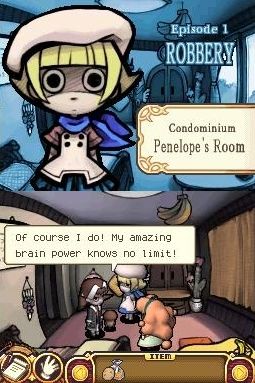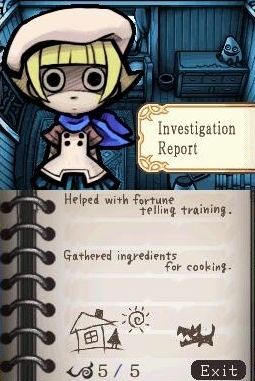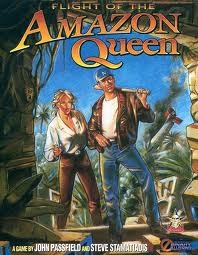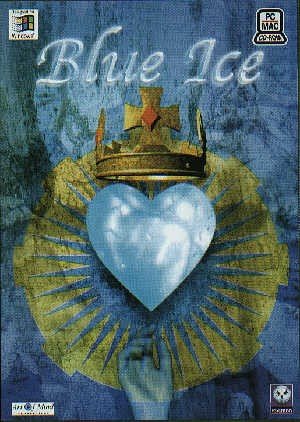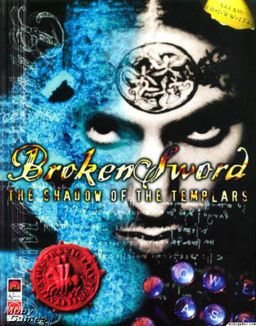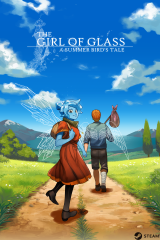Review for Touch Detective
After a dry year, a third adventure game has finally been released for the Nintendo DS: Atlus' Touch Detective. This game follows on the heels of Cing's haunting Another Code (Trace Memory) and Capcom's energetic Phoenix Wright: Ace Attorney, and it serves as a prelude to their respective follow-ups in Hotel Dusk: Room 215 and Phoenix Wright: Justice for All, along with a couple of recently-announced adventure games under development by western studios. Until these are released, Touch Detective is the only new offering for DS owners hungry to play an adventure game on the handheld platform. So how does this middle child fare? Stereotypically, it tries hard but never really lives up to its potential. Think of it as the Jan Brady of the DS world.
Touch Detective is a simple game about a little girl who has apparently inherited her father's detective agency. Her father's death is alluded to in the beginning of the game but never explicitly stated; Mom is completely out of the picture. Mackenzie's only family is her butler, Cromwell, who encourages her throughout her investigations, builds a few handy contraptions, and is always on hand to serve tea. A detective just starting out, Mackenzie's dream is to earn her way into the prestigious Great Detective Society, but she must first solve enough cases to build up her reputation.
The point-and-click interface that is so common in PC adventure games has been translated well to the Nintendo DS. You control Mackenzie by tapping the stylus on the bottom screen. Alternatively, you can move the arrow keys on the D-pad, which causes a small cursor to move around the screen, and hit A when the cursor lands where you want it. This method works okay, but isn't as precise or quick as using the stylus. The area at the bottom of the screen contains icons to access the main menu and the inventory. Tapping the stylus on an inventory item provides a closer view, and touching various parts of the close-up may reveal new information about the item. Items can sometimes be combined by using one on another while in this close-up view. All of these actions take place on the bottom screen.
Some of the things Mackenzie touches as she goes about her investigations are added to a seemingly arbitrary "Touch List" that lives in the main menu. This is reminiscent of the point lists in old Sierra games, and encourages the player to interact with as much of the world as possible. Mackenzie tells you when something has been added to the Touch List, but you have to save your game and go back to the main menu before you can see the list and read what she has to say about the item. This cumbersome process quickly turned keeping up with the Touch List into a low priority for me.
When the characters speak, text scrolls onto the screen, word by word, in talk bubbles above their heads. The A button clears this, but only after the line is fully visible—there's no way to jump ahead manually as the dialogue scrolls out. This annoyance is exacerbated by the fact that you'll only know if you've exhausted conversation with someone by tapping the person again and getting the same lines you've already seen. Since characters often change what they have to say only after you've done something seemingly unrelated in another part of town, you'll find yourself in this situation often as you try to figure out what's been triggered. Brace yourself for a lot of repetition.
Not surprisingly, the game has no voice acting, but as text scrolls onto the screen, it's accompanied by a sound that changes in tone depending on which character is speaking. I thought this was a nice touch that helped establish each character's personality, in spite of the DS's functional limitations.
The top screen is hardly used at all, which is a real shame. At almost all times during the game, that screen shows a close-up drawing of Mackenzie and a placard that displays the case's title and the location you're in. This is fairly unnecessary information, since there's no way to jump from case to case, and the game has only about seven locations total (three of which are not accessible during early portions of the game). Occasionally Mackenzie's facial expression will change in reaction to something she's learned, or her thoughts will appear in a bubble above her head on the top screen, but she only has about three expressions and her thoughts are often unrelated to what's going on, not to mention fairly mundane. For example, as a client describes a case to her, Mackenzie's worrying about her tea: "My tea is getting cold. I should add ice. Then I'll have iced tea!" I quickly got in the habit of ignoring the top screen.
Touch Detective's four cases, which can only be accessed in a linear order, follow Mackenzie on fairly simple, traditional quests. (There's also a so-called "bonus episode," a series of side quests with no central plot to string them together. This can be accessed at any time, but since the game only has one save slot, you can't stop mid-case to try out the bonus episode without erasing all of your progress in the current case.) The four main cases all have something to do with Mackenzie's oddball friend Penelope, a bubbly blonde with a taste for bananas and an affinity for getting herself into sticky situations. To give you an idea of the flavor of these cases, the first involves Penelope's recurring dream about playing with ducks in the park. Penelope wakes from the dream just as it's getting good and has an "empty feeling in her heart," which she's convinced is the result of someone stealing the rest of her dream from her. Penelope wants Mackenzie to find the dream thief. Mackenzie doubts Penelope's suspicions at first, but grows to believe them as she investigates, and the case takes an absurd turn near the end. I won't give away the details, but in the end, after all this work, the resolution of the case is silly and a big let-down. Unfortunately this is true of all of the cases. They build to a climax, and then end suddenly and neatly, with an explanation so simplistic, I was left wondering why I did all that footwork for so little payoff.
All of Touch Detective's cases have a decidedly juvenile tone. The player is constantly reminded that Mackenzie and her friends are kids with kid problems. Adults are given little reason to care about the characters and their situations, and the cases never really extend past the realm of childhood make-believe. The stakes just aren't high enough. But this is not a game for children—at least, Atlus' positioning of the game has given no reason to believe so. If anything, they're targeting the same adult crowd that enjoyed Phoenix Wright, but this game is nowhere nearly as complex or engaging. Children may enjoy Touch Detective, but I think it would be too difficult for the very young kids who would take the stories at face value, and still too juvenile for older kids more equipped to solve the game's puzzles and cope with its gameplay mechanics. No, I believe this is a game intended for adults; it just doesn't have the right balance of amusing childhood situations and mature observations and motivations for adult players to relate to it.
In tune with the childlike subject matter, Touch Detective has an unapologetically quirky cast of characters. The children in the game—Mackenzie and her friends Chloe, Penelope, and Daisy—have a distinctly anime look, especially in their close-up shots, with big heads, big eyes, and small, often surprised mouths. As for the other characters, there doesn't seem to be any rhyme or reason about them. Some are plain old humans, such as the pastry chef and the circus master, while others couldn't be farther from human if they tried, such as Beatrice (a life-sized bird in an apron), Dover (a tattooed shark who scarfs cake at the bakery all day long), and Funghi (Mackenzie's pet mushroom, who follows her around like a dog). Then there are the passers-by scattered around the town, whose faces inexplicably resemble the ghost masks in Scream.
I've seen a lot of praise for Touch Detective's graphics based on screenshots, but I personally didn't find them that great in the full game. The backgrounds are well drawn but there's nothing truly special about them, perhaps because the locations themselves are very ordinary (i.e. Mackenzie's bedroom, a park with a pond in it, a shopping plaza with a bakery and a clothing store). The characters themselves stand out from the backgrounds, not quite in the same style but fairly detailed, in spite of their tiny size on the DS screen. Cutscenes are handled as a series of sketches, sometimes spanning both screens, in the game's only unique use of this DS feature, which are rendered in the same cartoony style as Mackenzie's close-up.
With a few exceptions, I found the abrasively upbeat music annoying and out of place. One of the themes, which plays in the lobby of the planetarium, worked very well to establish its mysterious and creepy atmosphere, but most of the others were jarring and way too peppy for what was happening on-screen. This probably contributed to my perception of the game as too childish for adult players, and about halfway through the game I had to turn the sound off because I couldn't take it anymore.
Each of Touch Detective's four cases took me between one and three hours. Unfortunately, some of this time was spent wandering aimlessly, trying every item on every character, and experiencing the same conversations again and again, so I wouldn't say it was all time well spent. The game has a few frustrating pixel hunts, which are thankfully limited by the touch screen's small size, but are also exacerbated by the lack of visible hotspots. You can tap the stylus anywhere you want, sometimes getting a response and sometimes not, with no clear distinction between the two possibilities. This was most annoying during not one, but two "Hide and Seek" sequences in the so-called bonus case, but I also had trouble with pixel hunting a few times during the game proper.
Sadly, none of Touch Detective's puzzles make creative use of the DS's dual screens or microphone, which is criminal in an adventure game designed for this platform. The puzzles are primarily item- and conversation-based, with few (if any) stumpers. Aside from the pixel hunting and one annoying stretch where I didn't realize I had to combine two inventory items before asking someone about them, I never got stuck. Not that I enjoy being stuck—I'd rather play a game with a story that flows well than one comprised of a ridiculously difficult set of puzzles—but coupled with the game's lackluster writing, the lack of challenge left me feeling like it was all busywork.
Speaking of the writing, it has a bad habit of missing its mark. Many of the things characters say and situations they find themselves in left me unsure of how we got from A to B. This could be a translation issue, or it could be that the game isn't very well written; maybe a bit of both. Plus the jokes (or, at least, what I think were supposed to be jokes) didn't always translate. For example, if you click on a trash can in the shopping plaza, Mackenzie leans over it and says "King Midas has donkey ears!" then turns to the player and says, "I feel better now." Not only did I not get it, but never knowing if there would suddenly be something in the trash can, I had to hear (see) it over and over. This is just one example; the game is full of little quips that left me scratching my head.
Unfortunately, the novelty of Touch Detective's platform is not enough to transform a flawed game into an amazing gaming experience. In fact, based on everything I've said in this review, I wouldn't be surprised if you thought I hated it with a passion. So you might be surprised now when I do a complete 180 and say that if you're a DS owner and a fan of adventure games, you should seriously consider buying Touch Detective.
Wait, what?
Yeah, it's far from the best game under the sun, but the fact remains that Touch Detective is one of the few adventure games out for the Nintendo DS. For that reason alone, it's worth buying if you are in the subset of people who both own a DS and like adventure games. I played most of Touch Detective on airplanes during a weekend traveling from California to Boston and back. That's more than I can say for any PC adventure game, ever, which made it worth my thirty bucks. It all depends what you're looking for. As a game, compared to most of today's PC adventures (not to mention the classics), Touch Detective isn't that great. It falls into too many of the same pitfalls that plague some of the less-inspired PC adventure games, which just goes to show that making a game for the DS does not in and of itself make that game fun and innovative. At the same time, it's a different experience than most of the games you can currently get for the DS, and I applaud Atlus for taking the chance to bring this type of game to this platform. I can only hope the developers have learned something from the experience, and that their next foray will be better. We're going to need something to play after the next wave of DS adventures has come and gone.


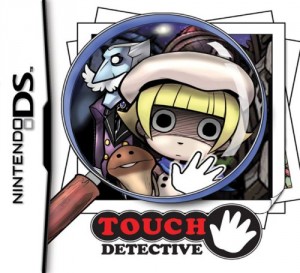
_capsule_fog__medium.png)

